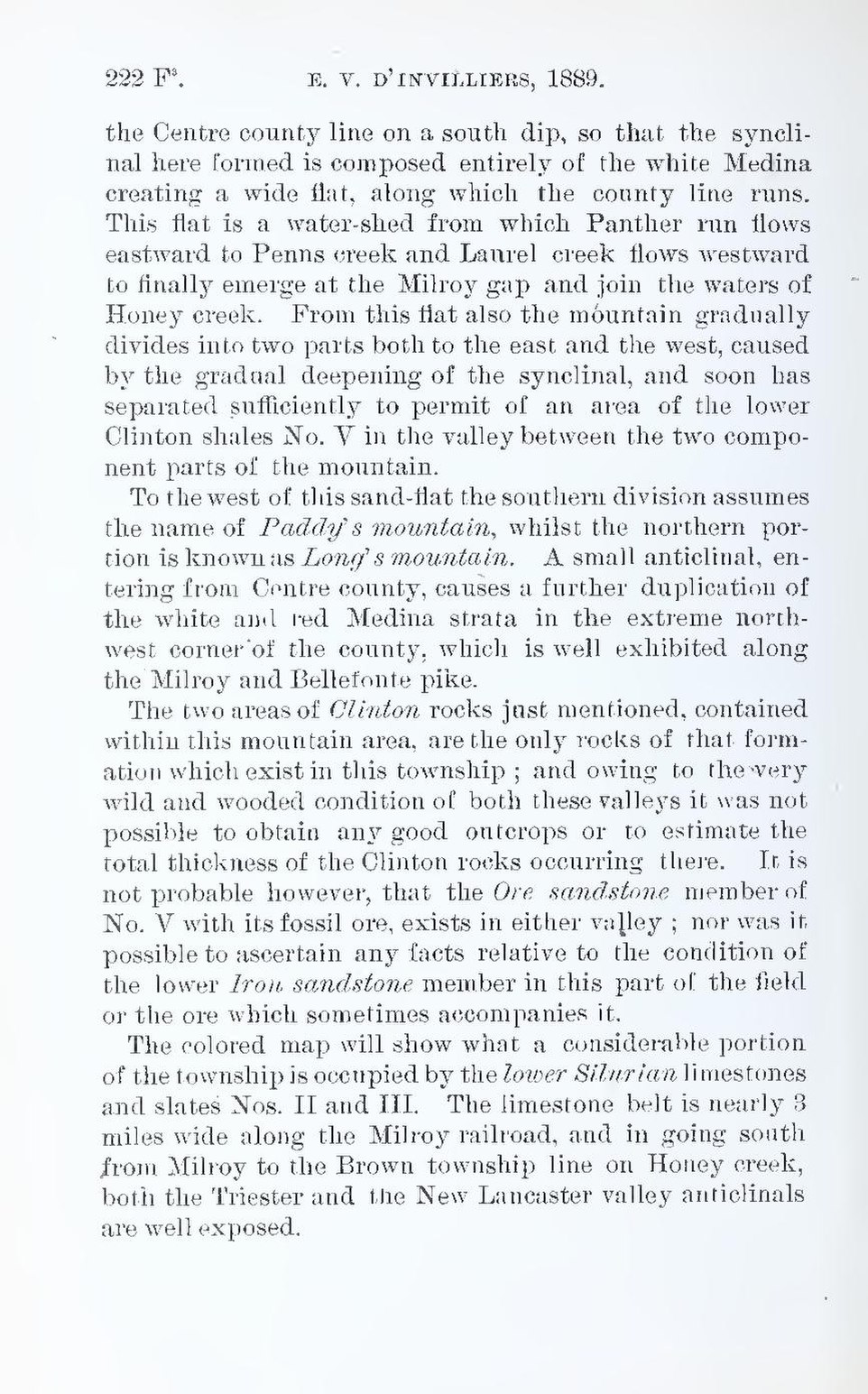the Centre county line on a south dip, so that the synclinal here formed is composed entirely of the white Medina creating a wide flat, along which the county line runs. This flat is a water-shed from which Panther run flows eastward to Penns creek and Laurel creek flows westward to finally emerge at the Milroy gap and join the waters of Honey creek. From this flat also the mountain gradually divides into two parts both to the east and the west, caused by the gradual deepening of the synclinal, and soon has separated sufficiently to permit of an area of the lower Clinton shales No. V in the valley between the two component parts of the mountain.
To the west of this sand-flat the southern division assumes the name of Paddy’s mountain, whilst the northern portion is known as Long’s mountain. A small anticlinal, entering from Centre county, causes a further duplication of the white and red Medina strata in the extreme northwest corner of the county, which is well exhibited along the Milroy and Bellefonte pike.
The two areas of Clinton rocks just mentioned, contained within this mountain area, are the only rocks of that formation which exist in this township; and owing to the very wild and wooded condition of both these valleys it was not possible to obtain any good outcrops or to estimate the total thickness of the Clinton rocks occurring there. It is not probable however, that the Ore sandstone member of No. V with its fossil ore, exists in either valley; nor was it possible to ascertain any facts relative to the condition of the lower Iron sandstone member in this part of the field or the ore which sometimes accompanies it.
The colored map will show what a considerable portion of the township is occupied by the lower Silurian limestones and slates Nos. II and III. The limestone belt is nearly 3 miles wide along the Milroy railroad, and in going south from Milroy to the Brown township line on Honey creek, both the Triester and the New Lancaster valley anticlinals are well exposed.
